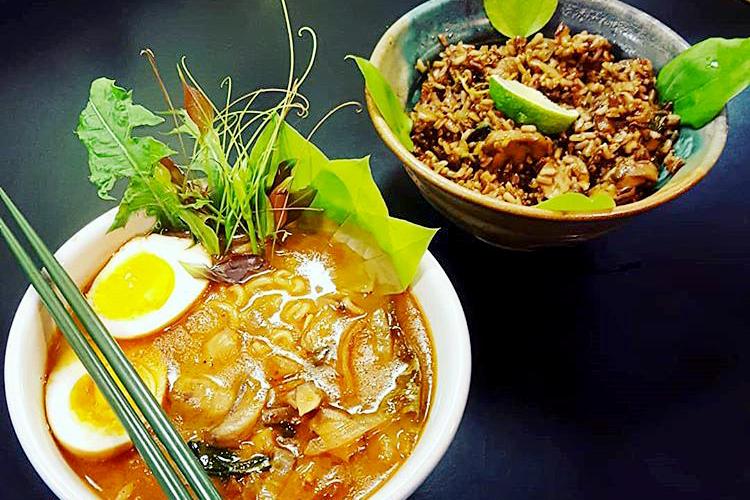
Everyone who works on boats far away from home tries to bring a little bit of it with them—Family pictures, books, food. Fishermen and observers alike also go to lengths to replicate the comfort of home and take their minds off the cold, wet, exhausting drudgery of fishing in the Bering Sea. For me, one of those talismans of coziness is ramen.
Ramen is the Japanese spiritual equivalent to both a good soul-healing, heart-warming American style chicken soup, but with the fast-casual feel of counter-served barbeque ribs. Up here floating around on the Bering Sea in Alaska, ramen is one of those things that’s just inescapable. Even if you’re one of those weird observers who say they hate it, you’ve probably sat in the galley on a 24+ hour steam and broke down and fixed yourself a bowl… or three. I only sorta knew about ramen when I started this job in 2012. I always loved trying new things, especially from cuisine cultures I had no experience with.

Alaska provided me with an opportunity to try lots of new foods on boats made with love by Filipinos, Samoans, Hawaiians, Somalians, Japanese, Vietnamese, Norwegians, and many others. Just about every seafaring culture in the world is represented on Alaska’s commercial fishing boats and so is their food. Cooks and food quality on boats is highly variable, from prime rib and black cod tamarind soup to grey-green hot dogs and oily chili beans- it’s all there- but people tend to give extra love to the dishes that make them feel most at home.
Real ramen - the kind where the broth is cooked for days at a time before its ready—isn’t really feasible to cook on boats. The liquid spills out of the pot in gnarly weather, it’s a pain to cook individual servings of noodles, etc. However, the instant kind—those Spicy Kimchi Noodle Bowls, among others—are always available as a snack for anyone up at an odd hour or for when you miss a mealtime due to sampling down in the factory or a long tally period out on the frigid weather deck in A season (the first season for the pollock fishery).
As long as I have spent on boats up in Alaska, I have learned a few tricks about how to make the absolute most of those hectic moments of pause and how to use those unremarkable square, crunchy blocks of noodles to rebuild my homesick soul and boost my core body temperature (hypothermia is one of the biggest dangers we train for as observers—Safety First).
On most factory boats, the ones that catch and process fish all onboard, there is always a commercial-style galley manned by at least one cook. It’s almost always cramped, space being a premium on all vessels, so the old saying “too many cooks in the kitchen” applies in spades. I stay out of it unless I’ve been welcomed and given expressed permission to use the facilities. Luckily, you don’t need much from the galley itself to whip up a hot tasty bowl of ramen.
For smaller catcher boats, the living spaces are much more open and homey. So, feel free to head to the crew fridge. It’s simply a commercial fridge where crewmembers can store their leftovers or where snacks are made available. Maybe you’ve saved a piece of chicken thigh, flank steak, or pork rib bone from your last meal, maybe even some sautéed veggies. Definitely pull those out and put those in your ramen bowl before it goes in the microwave.
One of the most fascinating things about boats totally unknown to landlubbers is the incredible selection of spices, sauces, toppings, dressings, dry seasonings, and wet rubs that give a predictive picture of the cultures represented by the crew and are always out and available. Lots of choices to make your ramen bowl more enticing. If you think that putting American cheese on instant ramen is gross or sacrilegious, go read about Roy Choi’s Korean childhood afterschool snack. This should round out your extemporaneous ramen adventure quite nicely.
Of course, all of this can be done at home easily. However, the small epiphanies that can be had in a new recipe discovery are really never equaled in my job, except for maybe correctly identifying a tiny sculpin or poacher not found in our issued field guides.




